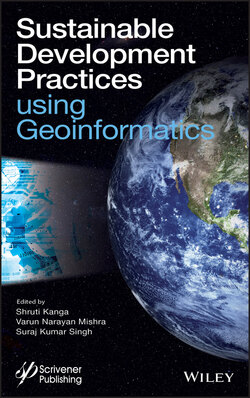Читать книгу Sustainable Development Practices Using Geoinformatics - Группа авторов - Страница 29
2
Geo-Environmental Hazard Vulnerability and Risk Assessment Over South Karanpura Coalfield Region of India
ОглавлениеAkshay Kumar1*, Shashank Shekhar1, Anamika Shalini Tirkey2 and Akhouri Pramod Krishna1
1Department of Remote Sensing, Birla Institute of Technology, Mesra, Ranchi, Jharkhand, India
2Department of Geoinformatics, School of Natural Resource Management, Central University of Jharkhand, Brambe, Jharkhand, India
Abstract
Coal is the major energy resource in India, as well as in the world. It is a prime source of energy for industrial growth but coal mining and uses can harm the land, air quality, surface and sub-surface water, and human health. In the present study, attempts were made to estimate the geo-environmental hazards and risks in South Karanpura Coalfield region using information on land use/land cover (LU/ LC), aerosol optical thickness (AOT), precipitable water vapor (PWV), and temperature conditions integration with socio-economic vulnerability in geographic information system (GIS) environment. AOT, PWV, and temperature were measured using a MICROTOPS-II Sunphotometer instrument during the month of January 2011. Census data were used to examine the socio-economic vulnerability of the region through computation of population density, total workers, children below ages 0–6 years and literacy rate. Results indicated that 32.03% (122.16 km2) of the area is in a high to very high risk zone in the central and eastern part of study area. The majority of the risk-prone areas are present in the vicinity of industry and mining areas also have a higher population density.
Keywords: Geo-environmental hazards, socio-economic vulnerability, risk, coal mining, GIS
